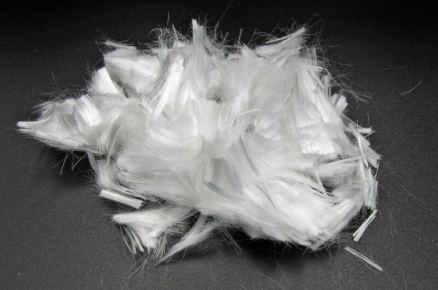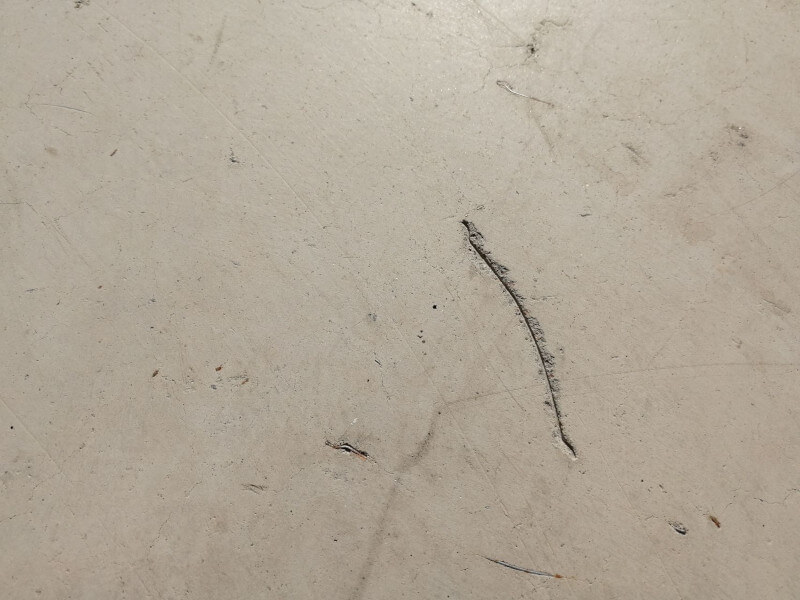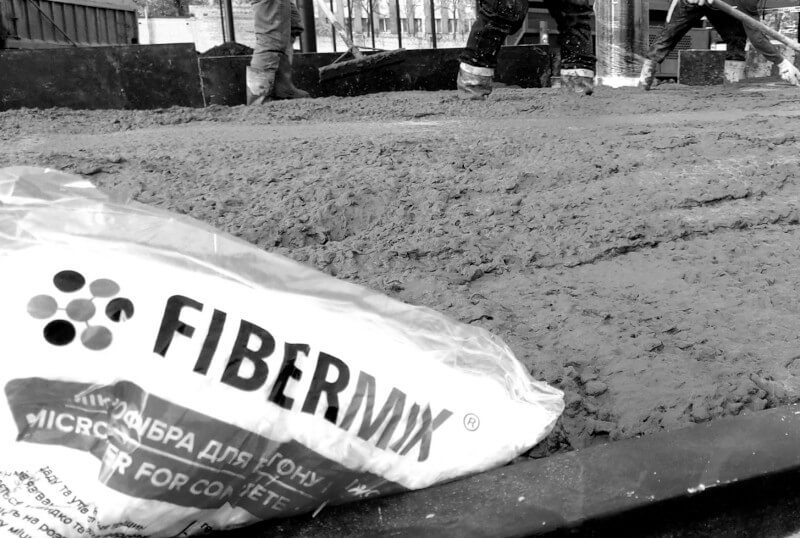
Underfloor heating with fiber
Floor heating is gaining popularity as it helps to evenly increase the temperature in the room without wasting energy. Several technology options are used: classic water, water-electric, with heating elements made of metal tape or using heating cables. Often the system is mounted in a screed, which causes some difficulties.
Contents
- Disadvantages of screed without additives
- What is fiber for underfloor heating
- How polymer fibers work
- Installation technology
- How much fiber is needed for installation
Polypropylene fiber for underfloor heating makes it easier to fill the room with concrete, and also saves the budget. In this article, we will figure out why polypropylene is needed, how to choose it and in what proportions to knead.
Disadvantages of screed without additives
In the standard arrangement of underfloor heating, an insulating layer is laid on a flat surface, which protects against heat loss and moisture penetration. Then the pipe structure is assembled, which is poured with concrete. According to the laws of physics, the material of the heating elements expands when the temperature rises, and narrows when it cools.

Constant loads on the screed destroy the structure. The coating dries out at the points of contact with the pipes, cracks, splits and crumbles. A standard concrete or cement-sand mixture for underfloor heating does not provide for expansion or contraction of the material due to temperature fluctuations.
To reduce the internal load, increase the thickness of the screed. This approach protects the coating from destruction, however, it has tangible drawbacks. As the material thickens, the heat generation decreases. More time is required to warm up the pipes, and heat transfer is reduced. Warm floors cease to bring the desired effect.
A layer larger than 170 mm completely absorbs the temperature, does not heat the air in the room. In addition, a thick screed reduces the height of the room. To reduce physical stress on concrete, and to use the minimum thickness of the solution, synthetic fibers are added when mixing the solution.
What kind of fiber is there for a warm floor
Initially, steel reinforcement was used to create reinforced concrete structures. However, with the thinning of the concrete coating layer, small reinforcing elements were needed. As an additive to the screed, metal fiber – small pieces of steel wire. The technology is often used, although its shortcomings are obvious:
- damage to equipment during the preparation and application of the solution;
- great weight;
- low corrosion resistance;
- when the surface is damaged, the sharp edges of the steel wire stick out to the sides.
Screed metal fiber is used for industrial premises, but is not suitable for underfloor heating. Electrical elements in combination with steel lead to a short circuit. Rigid fibers damage the surface of plastic pipes, do not withstand the load of temperature fluctuations, turning into break points.

The polymer material is superior to steel additives in all characteristics, and complies with DSTU-N B V.2.6 and SNiP 2.03.13-88. Synthetic fiber protects the screed from cracks and shrinkage, extinguishes the processes of stretching and narrowing of pipes. The use of microfiber increases the service life of the warm floor, protects against the effects of alkalis and chemicals.
For the first time, concreting using polypropylene was tested in the 70s on a pavement in the United States. The canvas did not crack from high loads and temperature changes. The experience turned out to be successful. Later, synthetic fibers began to be used for the preparation of other concretes. Due to its heat resistance, synthetic threads are used for installing underfloor heating.
How polymer fibers work
The fiber for underfloor heating screed is evenly distributed throughout the solution during mixing, and reliably covers the heating elements. Polypropylene in concrete increases:
- resistance to loads and mechanical damage;
- resistance to temperature changes;
- protection against stratification of the solution during drying.
Synthetic fibers do not conduct electricity, so they are the only alternative for electric water underfloor heating that will last for many years. Polypropylene is resistant to abrasion. Even if the final layer of flooring is not laid immediately, the quality of the screed will not suffer during operation.
Warm floor with fiber can withstand strong static and dynamic loads. For example, frequent movements of massive objects or heavy furniture with thin legs. To prevent the surface from being pressed through, the tie layer is poured 30 mm. The minimum allowable mortar thickness above pipes – 25 mm.
Polymer fibers fill voids in concrete, minimizing internal stress. Less water is required to prepare the solution. This reduces the evaporation of moisture when the surface dries, prevents cracks, shrinkage and the formation of micro voids.
Polypropylene fibers reinforce the concrete mortar, penetrating the layers. In the mixer, the threads are mixed with the solution, and distributed throughout the volume. Microfiber increases the frost resistance of concrete. The coupler maintains impact from below – freezing of the soil and shrinkage of the building, which is typical for private houses.
Installation technology
A thick layer of more than 100 mm will not allow heat to pass through, turning the installation of a pipe system into a waste of money. A heavy concrete layer exerts an excessive load on the floors of the structure, which is dangerous from a design point of view. The maximum allowable screed thickness – 80 mm. It is used when an unheated technical room is located under the floor.
Fiber for underfloor heating is used on a pre-leveled surface. If it is necessary to raise the level of the room, then first pour the necessary layer of mortar, level the surface, then lay the pipes and complete the screed.
The main parameter affecting the efficiency of the underfloor heating – thickness of the concrete layer above the heating elements. Distinguish fill:
- wet concrete or cement-sand mixture with a minimum thickness of 50 mm without the use of polymer additives;
- microfiber mortar for underfloor heating concrete 25-30 mm thick.
A layer difference of 2 times saves materials, optimizes installation, and speeds up drying. In order for the surface to quickly grab, follow the rules prescribed in the DSTU-N B V.2.6 standard.
The room temperature should not fall below 5 degrees. The floor is protected from frost and drafts. A week after laying, the screed is covered with moisture-retaining material.
How much fiber is needed for installation
In order to choose the proportions of the mortar for the underfloor heating screed, several points must be taken into account. The thinner the screed, the shorter the fibers used. 6 and 12 mm FiberMix monofilaments are added to the concrete mortar for pipe installation in a standard apartment. Synthetic additive ArmoTec with a size of 14 mm is used for screeds of industrial premises, and in the case when excessive load on the floor is expected.
Microfiber consumption is calculated based on specific installation conditions. For a minimum layer of concrete, 0.3 kg of synthetic fibers are mixed per 1 cubic meter of concrete mortar. This is enough to reduce shrinkage and prevent microcracks. The effect increases if the amount of fiber is increased to 0.6 kg per 1 cu. The proportions are suitable for mounting simple screeds in residential and commercial areas.
Heated floors are distinguished by a critical temperature difference in small areas. The best option for operating conditions – reduce the amount of water and the drying time of the mixture by increasing the concentration of the fiber. The heating elements of the structure are poured with concrete mortar with the addition of FiberMix polypropylene fibers 12 mm long at the rate of 0.9 kg per 1 cubic meter
Recommended products
 |  |
| Microfiber FiberMix | Macrofiber PolyMesh |